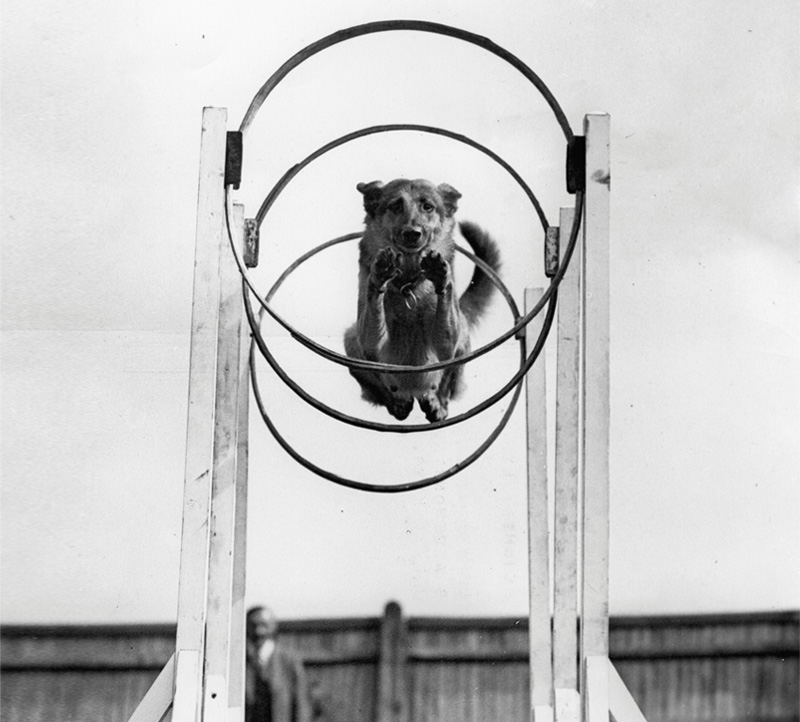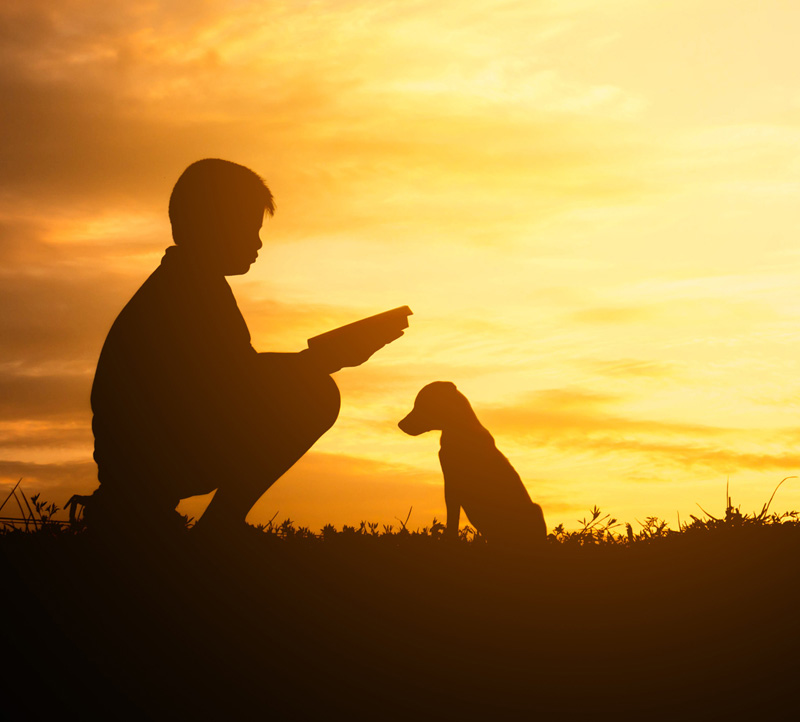The vast majority of dogs can’t believe their luck the first time they are served raw food.
It is as if all their gastronomic dreams have come true at once.
A small percentage express initial doubt (‘What is this you are serving me? It smells good but are you absolutely sure it is food?’), which they quickly overcome.
An even smaller percentage (maybe one in a hundred or even one in two hundred) may have misgivings about the change and take a bit of persuasion.
Whichever group your own four legged family members belongs to, this article offers lots of useful information.
The quickest and easiest way to make the switch
As long as your dog is healthy the easiest approach is simplicity itself.
Leave a reasonable period of time between meals (24 hours is ideal, but you could try less) and then introduce the new, raw diet.
Incidentally, in the wild dogs may go for up to a week without eating so although they may give you reproachful looks, a day without food will do them no harm and may do them some good since it will give their digestive system time to rest.
Other switching methods
The only reason to try another approach to the straight switch (as described above) is if you encounter resistance.
In which case, we recommend one of the options listed below.
By the way, if you would like one-to-one advice on switching, do get in touch – we will be pleased to help.
The Gradual Approach
Slowly start adding raw food to whatever it is you normally feed, increasing the amount every day until it is 100% raw after one or two weeks (or longer, if you prefer)
This gives the dog’s stomach time to adjust to the change.
The Warm Approach
Take the raw food and cook/warm/brown it lightly in a pan (not a microwave and not any bones).
Every day cook it slightly less until it is raw.
This gives the dog’s stomach time to adjust to the change from sterile, processed food.
The Veg Free System
Some dogs love vegetables; others don’t, and the ones who don’t may decline to eat their food for this reason.
The solution?
Give in to them!
Remove vegetable from their diet completely and wait for a week or two before gradually reintroducing it.
The Gravy System
Another approach is to pour a little real gravy or break a raw egg or mix in some pilchards before serving the food.
The Load of Tripe Method
Fast Fido or Fifi for a day and then make the switch immediately, but only feed him or her green tripe to begin with.
Dogs find this incredibly easy to digest and it contains all the nutrients they need.
Do be careful how you handle the tripe, however, as the bacteria it contains can be harmful to humans.
What the behaviourists say
There are some dogs – almost always really intelligent and sensitive dogs from loving homes – who take a firm line on any change of diet.
‘I don’t care how good for me it is,’ they say by means of bark or gesture, ‘but I hate change and I would rather eat nothing than eat this raw food.’
This is really a behaviour issue rather than a dietary issues.
It is usually because the dog’s hunger for attention is greater than their hunger for food.
Moreover, being smart, they realise that if they don’t eat you’ll make a fuss of them, which, of course, they love.
The solution? Behaviourists say that you should:
- Give your dog a single chance to eat every 24 hours.
- If he or she doesn’t pounce on it with enthusiasm the moment you put the bowl down, lift it straight back up and wait another day.
- Never leave food down for your dog to eat when he or she feels like it.
In short, adopt a tough love approach.
Remember, no animal will starve him or herself if there is food available.
Also, dogs will experience no ill effects even if they don’t eat for a week.
Be strong, remember you are doing it for their sake, and don’t look into their eyes for too long as this may have the effect of weakening your resolve.
An exceptionally rare occurrence
A dog in a million, well maybe it is slightly more common, but it is definitely rare, will, and there is no nice way of putting this, regurgitate their raw food the first time or even the first few times they are fed it.
This is almost certainly caused by a conditioned reflex.
The dog’s stomach is expecting the normal food and has prepared the wrong kind of enzymes to digest it.
When the new food turns up, the system rejects it.
It is quite normal in nature (if slightly disgusting) for a dog to eat something, vomit it up and eat it again.
It is, of course, up to you whether you allow this.
But you shouldn’t panic.
The solution to this sort of vomiting is, initially, patience and then to use one of the switching options mentioned above.
Some canine experts suspect that dogs vomit a meal that they really enjoyed eating so that they can have the pleasure of eating it again!
If you have been raw feeding for a couple of weeks and the dog suddenly vomits, this may be an attempt to rid the body of toxins and is not unusual.
Obviously, if your dog is vomiting frequently you should check with your vet that there isn’t any serious underlying health problem.
Runny stools? Constipation?
You shouldn’t panic, either, if your dog’s stools change.
It is probably caused by the new diet and will pass in a few days.
In the case of runny stools it could also be the result of not enough bone in the diet as it is the bone that tends to make the stools firmer.
In the case of constipation, the opposite may be true.
The solution is, initially, patience and to use one of the switching options mentioned in this article.
You could also increase/reduce the bone element of the dog’s diet.
If your dog seems to have a problem with a particular ingredient try it for two or three days and then drop it and come back to it later.
It should also be said that there is a huge difference between soft or runny stools and diarrhoea. True diarrhoea is virtually liquid – like soup.
A reliable remedy (apart from increasing the amount of bone you are feeding) is to give the dog slippery elm.
Some people recommend mashed boiled sweet potato and leek to firm up stools.
If you are worried, return the dog to the old diet and start again when things have settled down.
At what point do you call in a vet? In the case of runny stools don’t wait more than a week. In the case of true diarrhoea you probably shouldn’t delay more than 24 hours. In the case of constipation don’t delay more than two or three days.
Incidentally, true diarrhoea is not caused by raw food per se but will almost certainly be the result of either a parasite or gastrointestinal problem.
If the latter, all that has happened is that the raw feeding has exposed the underlying problem.
When to seek experienced help
There are circumstances when a switch to raw feeding should only be undertaken with experienced guidance.
Dogs that have recently undergone bowel surgery or chemotherapy or that have a compromised immune system can all benefit from a natural diet but may need a special diet.
Also, older dogs, pregnant dogs and new mums will have special nutritional needs.
Please do contact us at Honey’s for free advice (you don’t have to be a customer) or consult a vet or other professional with raw feeding expertise.




